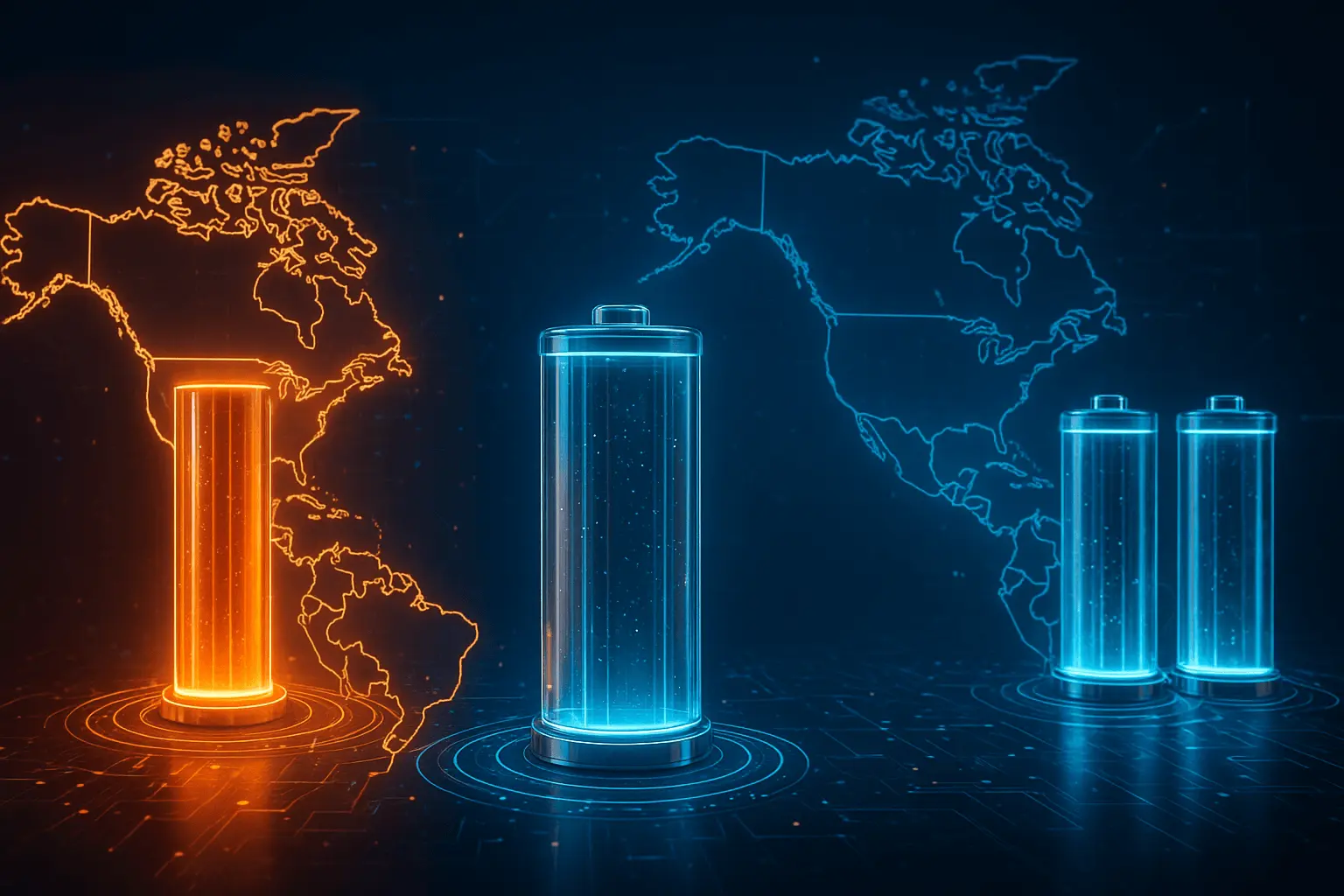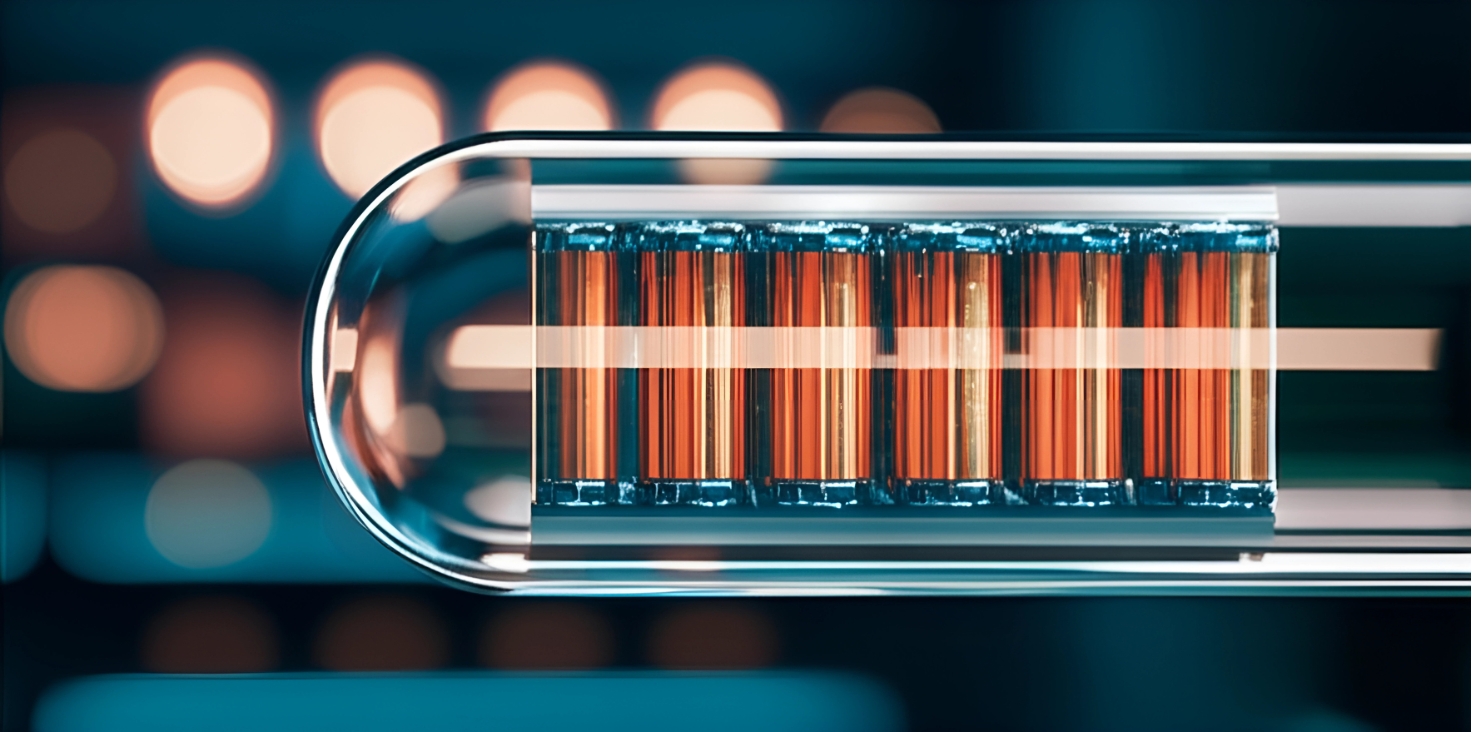
The Global Race for Solid-State Batteries: Who’s Leading the Charge?
- August 27, 2025
Key Highlights
- Asia Pacific is positioned to command > 50% market share, dominating the current landscape of patent filings, pilot lines, and strategic investments.
- Three distinct regional strategies: The Patent & Production Powerhouse (Asia), Technology Pioneer (North America), Strategic Optimizer (Europe)
- Japan and China dominate the patent landscape in the solid-state battery, while Chinese manufacturers rapidly scale production capabilities
The Geographic Power Shift
Solid-state batteries are the next frontier, and the race to control this technology is already defining the future of EVs, electronics, and more. But who is winning?
The solid-state battery revolution isn’t just about technology—it’s about which regions will control the multi-billion dollars market by 2035. The moves being made today are locking in who will lead the energy storage industry for the next decade.
The Performance Stakes Driving Regional Competition
Solid-state electrolytes represent a paradigm shift that’s forcing regional repositioning. The core advantages are reshaping competitive dynamics:
- Energy Density Revolution: Leading prototypes achieve 375–450 Wh/kg—a 60%+ improvement over conventional lithium-ion cells, directly translating to longer EV range and lighter designs.
- Safety and Speed Transformation: Sub-20-minute charging capabilities combined with inherently safer designs that eliminate flammable liquid electrolytes solve the two remaining barriers to mass EV adoption.
This potential is forcing the industry to choose a strategic path.
Three Dominant Strategic Positions
The global solid-state landscape has crystallized around three geographically distinct strategic approaches. Success depends on leveraging regional strengths while addressing inherent limitations.
1. The Patent & Production Powerhouse: Asia’s Quick Turnaround Strategy
The Strategy: Dominate through superior patent portfolios while rapidly scaling manufacturing infrastructure.
Champions: Japan (Toyota, Panasonic, Murata), South Korea (Samsung SDI, LG Chem), China (CATL, BYD).
Core Logic: Asia Pacific’s > 50% market dominance is built on intellectual property leadership combined with manufacturing scale advantages. Toyota leads with strong portfolio of more than 1,000 patent families, followed by LG, Samsung, Murata, and Panasonic—establishing a near-impenetrable IP moat while leveraging existing lithium-ion manufacturing infrastructure for faster solid-state transitions.
This position maximizes the region’s established electronics manufacturing ecosystem while creating technology licensing opportunities for Western markets. Success means controlling both the innovation pipeline and production capacity that will define the next generation of energy storage.
2. The Technology Pioneer: North America’s Breakthrough-First Approach
The Strategy: Lead through fundamental technological breakthroughs and strategic partnerships, focusing on next-generation architectures rather than incremental improvements.
Champions: QuantumScape, Solid Power, Factorial Energy.
Core Logic: North American companies are betting on revolutionary battery architectures that leapfrog existing technology rather than optimizing current designs. Solid-state battery market for North America is projected to surpass $5 billion by 2035, driven by companies like QuantumScape developing lithium-metal anodes and ceramic separators that could achieve energy densities above 500 Wh/kg.
This approach leverages Silicon Valley’s venture capital ecosystem and university research networks to fund high-risk, high-reward technological bets. Success means establishing technology licensing leadership and premium positioning in the most advanced solid-state applications.
3. The Strategic Optimizer: Europe’s Automotive Integration Focus
The Strategy: Optimize solid-state integration within existing premium automotive platforms while building strategic partnerships across the value chain.
Champions: BMW, Mercedes-Benz, Volkswagen Group (through QuantumScape partnership).
Core Logic: European automotive OEMs are focusing on seamless integration of solid-state technology within their premium vehicle platforms, emphasizing safety, reliability, and performance optimization over breakthrough energy density gains. This strategy leverages decades of automotive engineering expertise to create the most refined solid-state implementations.
The approach maximizes existing automotive R&D investments while ensuring solid-state batteries enhance rather than disrupt established premium brand positioning. Success means commanding the highest-value automotive applications while maintaining technology-agnostic flexibility.
The Competitive Reality Accelerating Regional Positioning
While Western companies refine strategies, Asian manufacturers are rapidly securing critical advantages. Chinese battery giants are expanding solid-state pilot lines while Japanese companies build patent portfolios that could control global licensing.
Strategic Questions Defining Regional Competitiveness
Every regional ecosystem must honestly assess its competitive position:
- Innovation Infrastructure: Do we have the research universities, venture funding, and talent pipeline to drive breakthrough innovation, or should we focus on optimizing and scaling existing technologies?
- Manufacturing Advantages: Can we leverage existing production capabilities and supply chains, or must we build entirely new manufacturing ecosystems?
- Market Access Strategy: Are we positioned to serve high-value niche applications or mass-market volume opportunities, and how does this align with our regional strengths?
- Partnership Capabilities: What critical capabilities do we lack regionally, and have we secured the partnerships necessary to access them?
The answers to these questions will point toward your most viable strategic path.
Your Next Decision: The Race is Far From Over
The solid-state transition is reshaping global energy storage. While Asia’s manufacturing and IP scale give it a formidable head start, North America’s high-risk, high-reward bets could change the game overnight. Meanwhile, Europe’s pragmatic focus on integration could win the highest-value segment: premium automotive.
The critical question is no longer which technology will win, but which regional approach will capture the greatest share of the emerging solid-state economy.
Share this Event
- All Posts
- Artificial Intelligence
- Automotive Industry
- Battery Technology
- Corporate Strategy
- Energy
- Energy Storage
- Healthcare
- Materials Science
- Medical Innovation
- Regional Strategy
- Technology

